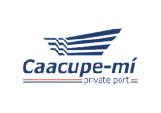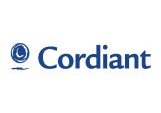Our services
strategic growth
Consulting firm specialized in the port and logistics sector, dedicated to strategic growth planning and integral preparation.
Strategic Resilience and Business Growth Cycle (CRECE Methodology)
At DUAGA, we have developed our own methodology called the Strategic Resilience and Business Growth Cycle (CRECE), which is focused on helping companies in the port and logistics sector to grow profitably and sustainably.
With our methodology, companies are able to capture more market share, operate efficiently in terms of costs and expenses, and implement optimal and sustainable processes over time to promote growth.
Our 5-step methodology is structured on a foundation of Project Management in an iterative and incremental manner, allowing our clients to continuously analyze their strategy and operations to maintain resilient growth in the face of market changes.
Decision Making Tools
We offer a comprehensive portfolio of studies for strategic decision-making in the port and logistics sector. Our team has extensive experience in the development of maritime, fluvial and logistics sector studies at international level for investment banks, international financing entities, multilateral entities, engineering companies, port authorities and terminals who have relied on our team of experts for the planning and development of their most strategic projects in different countries of the continent.
Logistics and Efficiency Studies.
Market Studies and Demand Projections.
Studies for the development of Public Policy and Regulation.
Pre-feasibility, feasibility and concession development studies.
Master Planning.
Strategic Planning and Commercial Profile.
Country Risk Analysis for investment - Country Overview.
Integral advisory in bidding processes for Public Works and Public-Private Partnerships.
Big Data and Predictive Analytics.
Concession Management and Conflict Resolution.
Project Management - Work planning, budget control and execution.
Engineering and Architectural Design (2D and 3D CAD) based on HD Drone and Satellite imagery.
Do you have a project in mind or do you need a strategic solution to be a leader in your industry?
We are your ideal partners for the growth of your organization.
successful cases
Below, you can find some of our success stories from across the Americas, where our solutions have contributed to the strategic growth of our clients.
Market research and demand projection
Market study and demand projection for one of the main port terminals in Colombia. The consulting team analyzed market trends, results and holdings by type of cargo, main clients and competitors, the top 10 shipping lines in the world, the 7 main port operators investing in the region, logistics services, trends and sizes of motor vessels and 15-year demand projection by type of cargo.
Engineering design, logistics study and efficiency study
Development of conceptual designs in RTG and ASC versions together with their respective capacity models to build a new container port with rail connection. The consulting team also contributed to the development of the terminal logistics analysis models that included the main associated risks.
Engineering design, logistics study and efficiency study
Design and planning for the creation of a new port, which included a rail terminal with intermodal operation, a new wharf, container yards, roll-on/roll-off reefers, empty containers, import and export containers, along with port capacity modeling. The study included the analysis and modeling of traffic flows and logistics processes of the terminal and the main risks of the new port.
Market research, engineering design, logistics and efficiency studies, financial modeling and concession development
Market study, 2D and 3D technical design of type warehouse, 2D and 3D design of industrial park, commercial park and port, special equipment study, customs inspection zone, regulatory framework, permits and licenses for a new port concession. Economic and financial projection of the project with financial models for each of the business units.
Logistics study and efficiency study
Design and traffic modeling to plan the growth of the logistics park (Free Trade Zone). The consulting team defined the requirements in infrastructure, signaling and technology to meet future traffic. UAV (Drone) technology and traffic modeling software were used for this work. Future traffic flows of organic and external cargo were projected, and the logistics of internal and external movements were analyzed.
Market research and demand projection
Market study and demand projection for one of the main ports in Paraguay. Analysis of the types of cargo handled by the terminal, shipping line services and logistic connections to the terminal. Analyzed the risks inherent to the development of new nearby terminals on the waterway.
SOME OF OUR CLIENTS

























